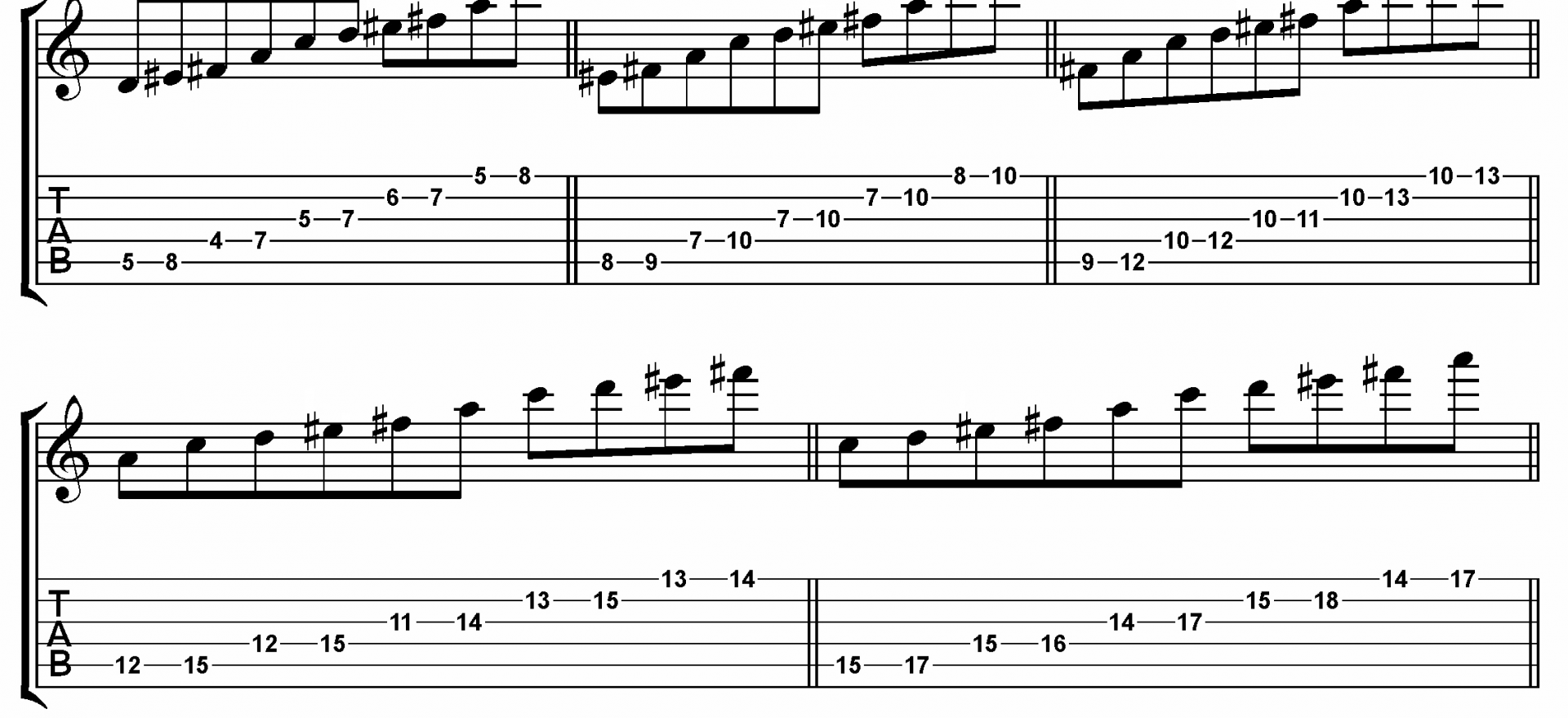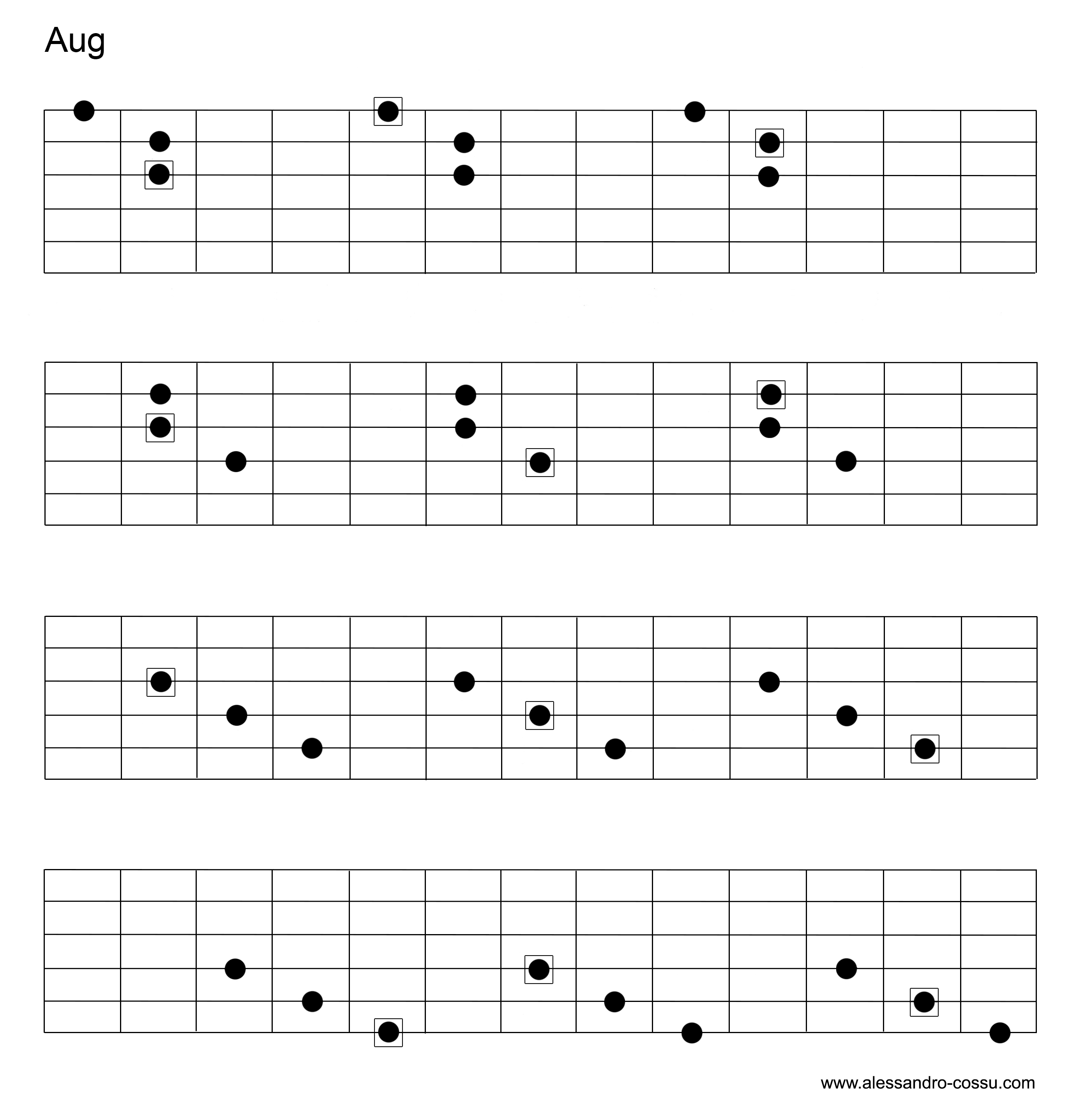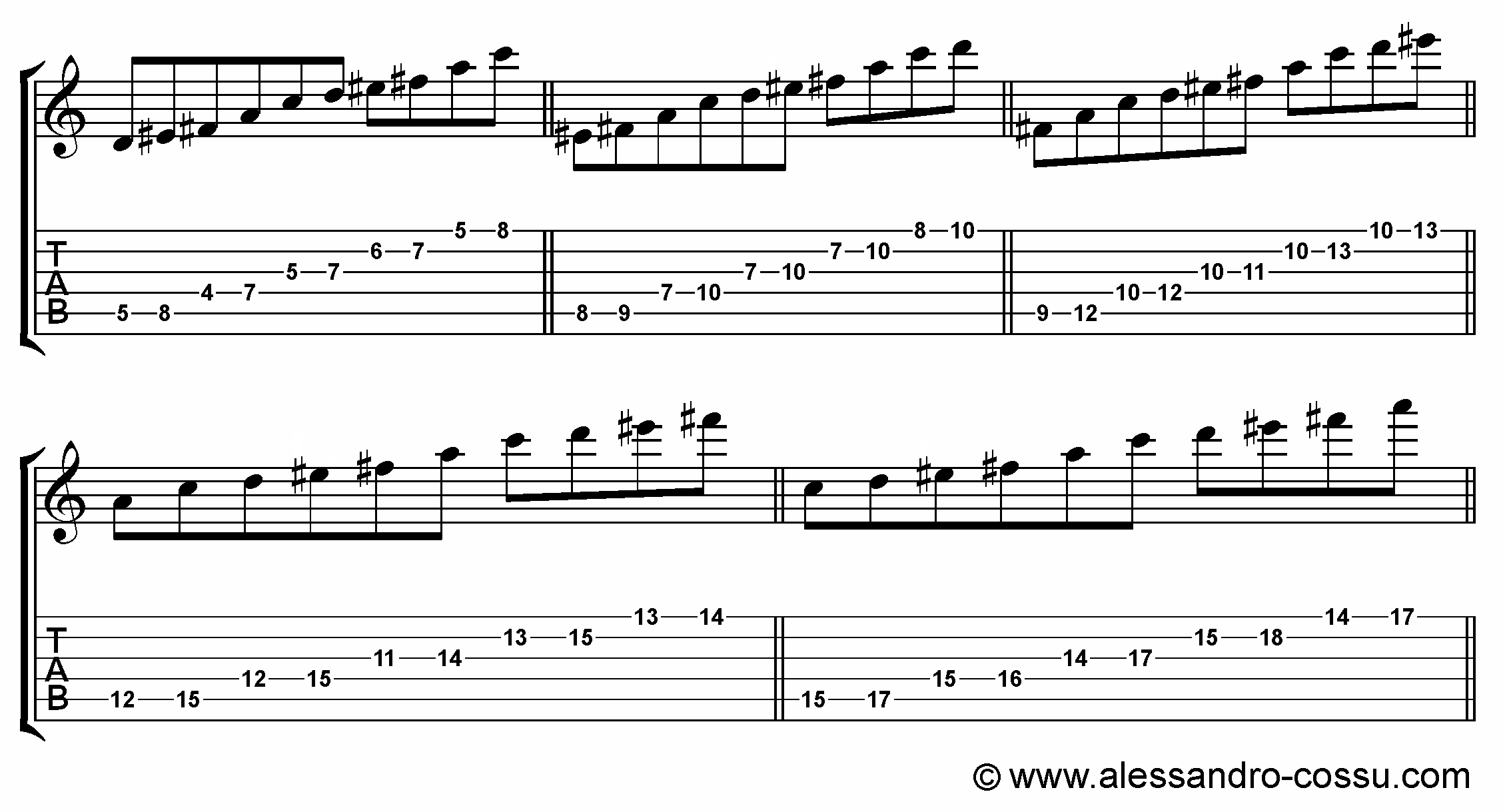Modal Chords
If I go back and think about the first years of my guitar studies, I have to admit that I found studying chords boring. It was that boring moment between a solo and the next.
I think in that period I was lacking the right perspective and, even more, someone making me understand that chords are not just good for church singings.
Luckily, at one point I grew up.
How Can I Express the Sound of a Mode with Chords?
I’ve already talked about the use of chords in the Major and minor scale and about the harmonization of their modes. So now let’s see how we can answer the above question (I don’t know if you’ve ever asked yourself this, but I did).
And the answer is: “by using chords that have the distinctive tones of that mode!” Super easy, right?
Ionian
Let’s start from the Ionian mode.
If you have someone playing the Root for you (or simply use a looper) you can superimpose all the chords derived from the scale harmonization and making so you are adding to the “basic” root sound the different sounds of the scale.
To express the Ionian sound we are going to target especially the 4th degree of the scale.
Let’s say we are in C Ionian.
The 4th degree is the F note and the triads containing it are F, Dm and B°.
Let’s also add the sus4 chords: Csus, Fsus(#4) and Bsus(b5).
What I’m going to do is to play these chords over a C pedal.

Lydian
Rather than following the order of the modes on the diatonic scale, I will first look at the Major modes (Ionian, Lydian and Mixolydian), then the minor (aeolian, dorian and phrygian) and finally the locrian (diminished).
The typical feature of the Lydian mode is the #4.
If we consider again C as root, the #4 is F#. This note is found in the II, IV and VII triads (D, F#m and Bm) and in the I, IV and VII sus chords.
With a C pedal, the resulting chords will be D/C, F#m/C, Bm/C, Csus(#4), F#sus(b5)/C, Bsus/C.

Mixolydian
Last major mode is Mixolydian and its “modal note” is the b7. In case of C Mixolydian this scale degree is represented by the note Bb.
Triads containing Bb are Bb, Gm and E°.
Sus chords are Bbsus, Fsus and Esus(b5).

Dorian
In the “minor realm” the first mode I’m analyzing is Dorian, whose characteristic note is the major 6th, together with the b3.
In C the major 6th is A, contained in Dm, F and A° triads and in Asus, Ebsus and Dsus.
Aeolian
In C Aeolian our target note is Ab (b6 of C aeolian scale).
Chords where this note is found are D°, Fm, Ab, Dsus(b5), Ebsus and Absus(#4).

Phrygian
The phrygian sound is expressed mostly by the b2, that in the scale of C is Db.
Again, this note is found in Db, G°, Bbm, Dbsus(#4), Absus and Gsus(b5).

Locrian
The last of the modes found in the diatonic major/minor scale is the locrian, the only one with the b5.
From C root, the fifth degree is Gb and is found in Db, Gb, Bbm, Dbsus, Gbsus(#4) and Csus(b5).








